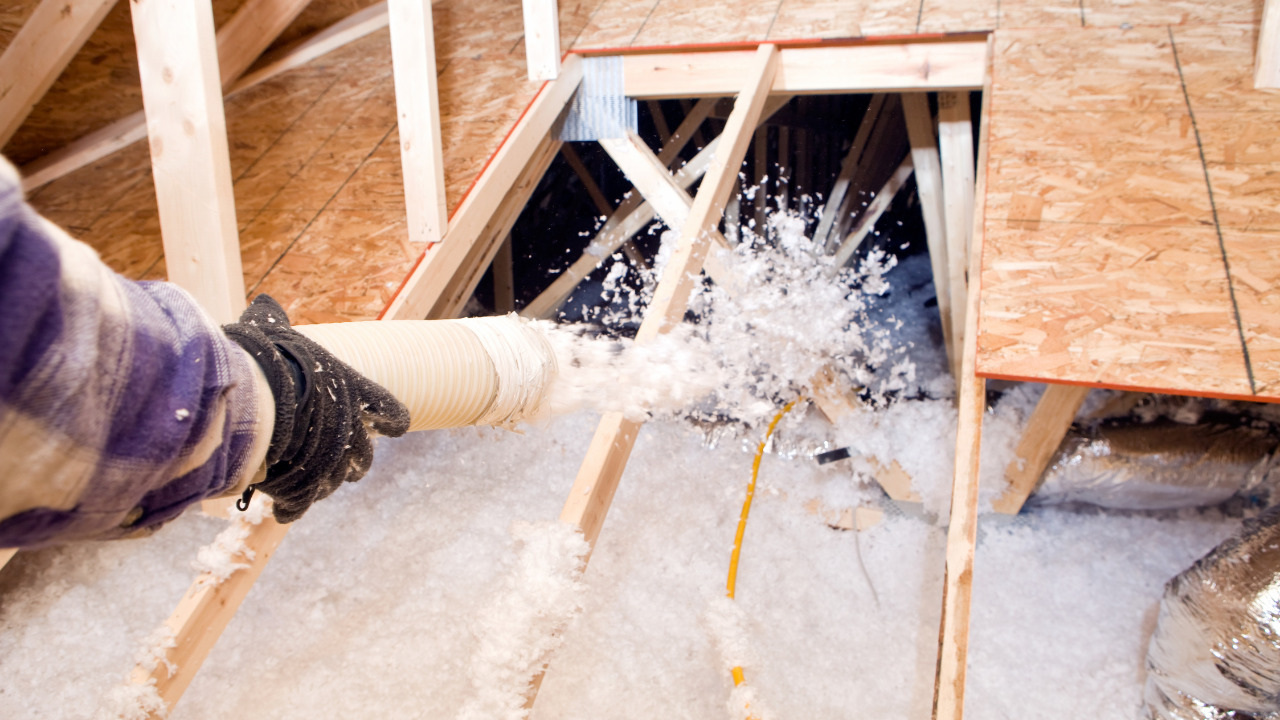Have you noticed that your heating expenditures are greater than usual? If this is the case, an insulation inspection is required to determine the type of insulation. Is it possible that your insulation contains asbestos? If yes, it will require special handling.
Before this, you have to know the main difference between asbestos and cellulose insulation.
The risks of asbestos are higher than cellulose insulation, especially in the case of long-term exposure. If you want to know the differences between cellulose and asbestos insulation, continue reading:
Table of Contents
What Is Cellulose Insulation?
Asbestos insulation can be replaced by cellulose insulation. Cellulose is made out of several materials such as recycled cardboard, scrap papers and hems. Builders treat cellulose mixtures made from paper with boric acid to make them fire-resistant.
Dry cellulose is blasted through the openings in the walls and used to fill the spaces surrounding pipes and wires. Wet spray cellulose is different since it is typically applied to freshly constructed walls. Water is added to the spray to create wet cellulose, which provides a better seal and prevents heat loss.
Wet cellulose is often applied to newly erected walls by contractors. The inclusion of water during the spraying process is the fundamental distinction between wet spray and dry cellulose. It has a superior seal, which prevents heat loss.
What Is Asbestos?
Asbestos is pliable and soft, but it is also extremely resistant to erosion and heat. Asbestos was mostly employed as a fire retardant and insulator in the construction industry in the early 1950s. Asbestos can be found in insulation, attic, drywalls and grout or tiles in older structures and residences.
Environmental scientists fear that millions of homes have vermiculite insulation containing asbestos. To get rid of vermiculite with asbestos, you’ll need to hire a licensed abatement company. Asbestos is found in many homes, but it only becomes an issue when damaged, and the particles become airborne.
How To Identify The Asbestos Insulation Material In Your Buildings?
The appearance and texture of insulation vary depending on the type used. Asbestos insulation is divided into pour-in insulation, wrapping insulation, blocks and powdery asbestos. Let’s discuss the main difference between these four types of asbestos insulations in detail:
Pour-In Asbestos Insulation
This asbestos-containing insulation is almost entirely constituted of hazardous materials. The loose and fluffy fibers are designed to be utilized as a pouring form of insulation.
Because asbestos fibers make up most of this type of insulation, inhaling it is particularly dangerous. This type requires caution because even a small amount of air might cause the fibers to shift.
Wrapping Asbestos Insulation
This type of insulation is mostly used for ducts and pipes. Builders simply wrap this insulation on the pipes or ducts. Most people cannot differentiate between wrapping asbestos and cellulose insulation because it also looks like a piece of cardboard wrapped on the pipes. If this type of insulation is in good condition, leave it.
But if there are cracks or damages on this insulation, the harmful particles of asbestos may lead to harmful health and environmental conditions.
Blocks Asbestos
If you see this type of insulation, you cannot find a difference between cellulose and blocking insulation. The reason is that this insulation looks like Styrofoam material. But this is 100% based on asbestos material. Most builders glued this type of insulation to the walls.
If these pieces or blocks have long-term exposure, they will surely cause several health risks.
Powdery Asbestos Insulation
This type of asbestos insulation is also known as spray-on insulation. It can be simply sprayed on pipes and ducts for insulation purposes. In case of damage, this powdery material will release harmful particles into the air.
Hire Professionals To Tell The Cellulose And Asbestos Insulation Differences Appropriately
It is best left to a specialist to tell the difference between asbestos and cellulose. Homeowners should not handle asbestos on their own, according to industry experts. It can be difficult to tell if your insulation has asbestos in it. It’s not something you want to touch or contaminate in your home.
Asbestos may be found in cement, specific kinds of batt insulation, and pipe insulation, in addition to regular insulation. Undamaged asbestos, once again, is not risky for human health. When asbestos fibers travel through the air, it becomes an issue. Inhaling these fibers poses a serious health danger.
Mold and mildew should be checked as part of an insulation examination. Both can have an impact on the insulation’s effectiveness. The most common causes of broken insulation include wear and tear on your home, as well as bats and rodents. To ascertain the extent of asbestos exposure, an expert evaluation is required.
Avoid Touching The Damaged Insulation Especially If You Don’t Know The Type
Though it’s a different insulator, all insulation places have the same problem. It can be tough to tell if your vermiculite has asbestos in it. You don’t want to expose yourself.
If you want to know the type of insulation material, you should get it tested by a professional specialist. It could be cellulose, but it could also be asbestos-containing insulation.
The best course of action is to avoid handling it and instead have a specialist take samples and establish whether or not it contains asbestos. If there’s asbestos, you’ll need to consider putting your building under an asbestos management program or completely removing the asbestos.
Final Thoughts
It is not easy to find the difference between cellulose and asbestos insulation. Even if you know about the material type, asbestos material could be containment in your insulation.
That’s why it would be better to leave it on the professional asbestos inspectors than do it yourself. The reason is that it will be harmful, especially if you are dealing with the damaged insulation with precautions and safety measurements.





